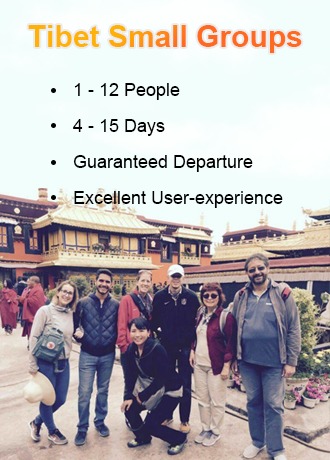Xinjiang Tibet Highway
- by Emily
- Last Updated: 2024-10-30
Xinjiang-Tibet Highway, also known as G219, is the highest-altitude road in the world. It starts from Yecheng County, Kashgar prefecture, in Xinjiang and ends in Lhatse County, Shigatse prefecture, Tibet, with a total length of approximately 2,143 kilometers. It extends nearly 500 kilometers to Lhasa, bringing the total distance to about 2,643 kilometers. The average altitude of this route exceeds 4,500 meters.
Traditional G219
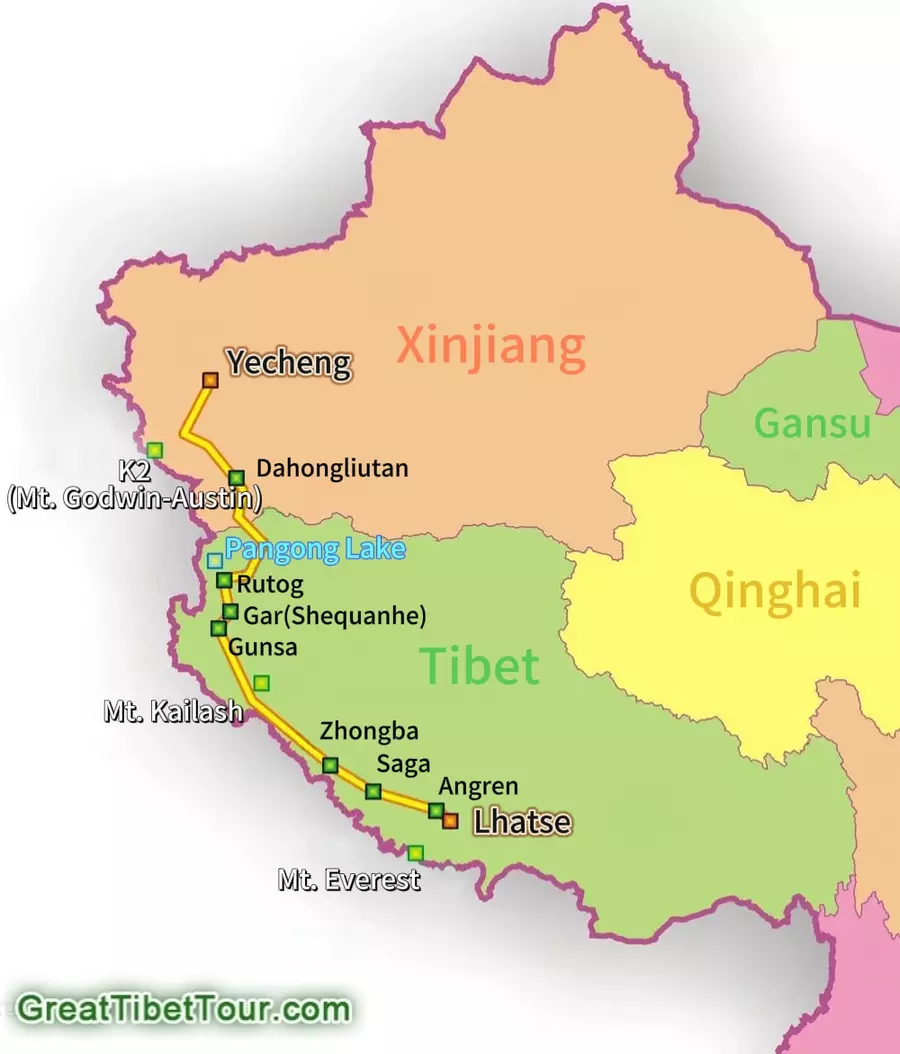
Traditional G219 begins from the Zero Kilometer Monument in Yecheng, Xinjiang and ends at the 2140 Kilometer Monument in Lhatse, Tibet, known as the Yecheng-Lhatse Highway. Then it extends to Lhasa via the G318 China-Nepal Highway, with a total distance of 2,643 kilometers.
Along the challenging and perilous route, it crosses the Lasitang River, Yarkand River, Karakash River, and Shiquan River, etc. It traverses world-renowned mountain ranges such as the Kunlun, Karakoram, Gangdise, and Himalayas, with an average altitude of over 4,500 meters. The most dangerous parts are specifically the Jieshan Daban ("Daban" means mountain passes in both Uyghur and Mongolian) with an altitude of 5,290 meters and the Kudaenbu Pass with an altitude of 5,432 meters, located between Xinjiang and Tibet.
Xinjiang-Tibet Highway is the most dangerous of the several routes into Tibet. In just three days, travelers ascend from 900 meters in Xinjiang, cross mountain passes over 5,000 meters and reach Ngari at 4,500m. This journey tests traveler’s physical limits due to extreme altitude, as well as complex and changing weather conditions.
New G219
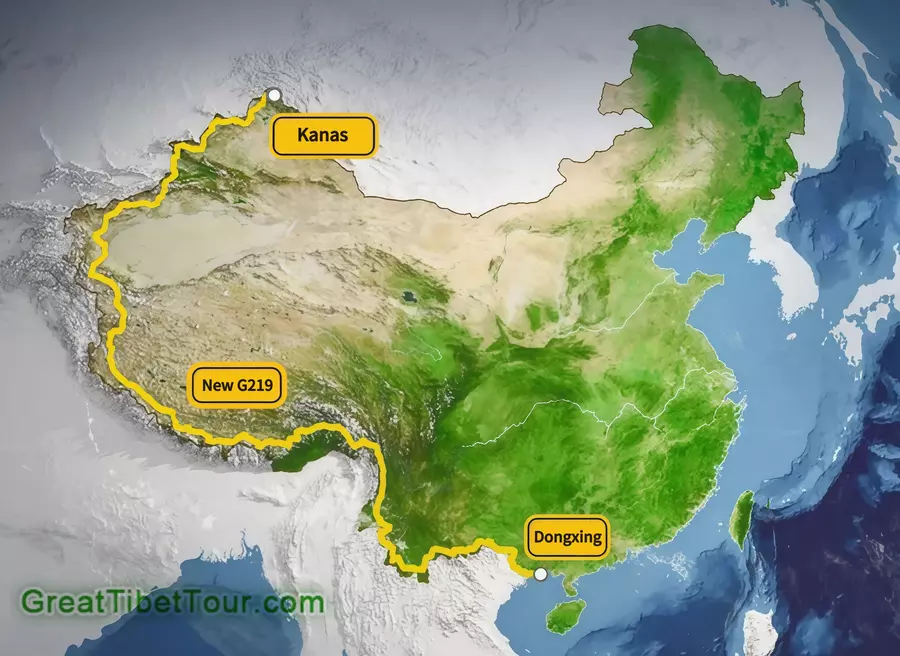
The construction history of the new National Highway 219 (G219) dates back to the 1950s. Its predecessor was the Xinjiang-Tibet Highway, also known as the Yecheng-Lhatse Highway.
After adjustments and integration, the new G219 now starts from Kanas in Xinjiang and ends in Dongxing, Guangxi, so it’s therefore also called the "Kanas-Dongxing Highway." It passes through four provinces: Xinjiang, Tibet, Yunnan, and Guangxi, covering almost the entire northwestern and southwestern borders of China. With a total length of 10,065 kilometers, it is the longest national highway in China.
G219 Overland Tour Itinerary
For self-driving enthusiasts, the section of G219 they are most interested in is still the traditional G219, the Xinjiang-Tibet Highway. If you're planning to drive along G219, it's recommended to start from Lhasa, the sacred city, to gradually acclimate to the high altitude. The journey takes you through stunning attractions such as Yamdrok Lake, the Karola Glacier, Shigatse, Everest Base Camp and Ngari, finally reaching Yecheng and Kashgar in Xinjiang.
Along this route, you'll pass through endless deserts, the vast and desolate Ngari no-man's land, the majestic and sacred Mount Kailash, and the deep blue waters of Lake Manasarovar. You'll also encounter wild Tibetan donkeys, antelopes, yaks, and gazelles. This drive offers a unique experience of Tibetan culture, profound religious beliefs, the ever-changing weather of the Karakoram Mountains, and the breathtaking scenery of the Pamir Plateau.
The total distance from Lhasa to Kashgar is approximately 2,841 kilometers, and it is recommended to complete this journey in 10 days. Please note that you will need a Tibet Travel Permit, an Alien's Travel Permit, and a military permit, so it’s advisable to contact a travel agency in Tibet at least one month in advance to assist with processing the necessary documents.
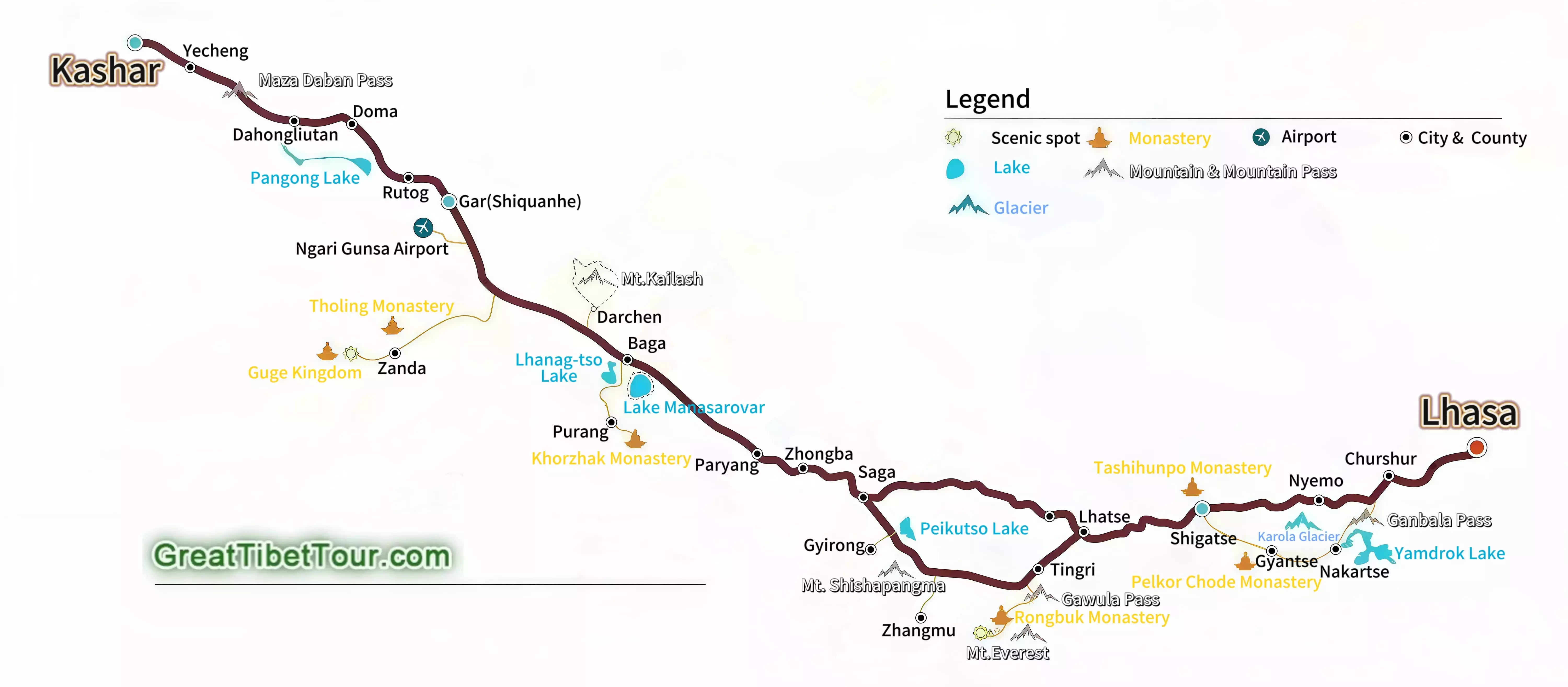
Suggested Itinerary:
Lhasa (Starting Point) → Shigatse (273 km) → Everest Base Camp (620 km) → Saga (955 km) → Darchen (1,447 km) → Zanda County (1,677 km) → Shiquanhe (1,927 km) → Pangong Lake (2,157 km) →Shahidulla (2,274 km) → Yecheng (2,637 km) → Kashgar (2,841 km, Endpoint)
Day 1: Lhasa - Shigatse
Starting from the sacred city - Lhasa (3,650 meters), to reach Shigatse, the second-largest city in Tibet. Along the way, you can enjoy the breathtaking scenery of Yamdrok Lake, one of the three holy lakes, resembling a turquoise earring dropped by a goddess. Then, continue to the Karola Glacier near the road, where the glaciers and rivers create stunning views. In the evening, arrive in Shigatse and check into a hotel for rest and acclimatization.
Day 2: Shigatse - Everest Base Camp
In the morning, you will depart from Shigatse (4,300m) and continue the journey, passing through Tingri County and reaching the Gawula Pass(5,210m). From the pass, you can enjoy a breathtaking panoramic view of the towering Himalayan mountain ranges. Afterward, head to Everest Base Camp (5,200m), the best place to witness the majesty of Mount Everest, the highest peak in the world. In the evening, you can stay at the nomad tent near Everest Base Camp, where you can experience a tranquil night under the starry sky.
Day 3: Everest Base Camp - Saga
Start from EBC and drive to Saga (4,600m). If the weather is favorable in the morning, you might catch the marvelous sunrise on the snow-capped peaks. Along the way, you’ll pass through the lush Gyirong Valley at the base of the Himalayas, where greenery abounds, flowers bloom, and the majestic snowy mountains and the clear Peiku Tso Lake provide a picturesque backdrop. This area is often referred to as the "backyard of the Himalayas."
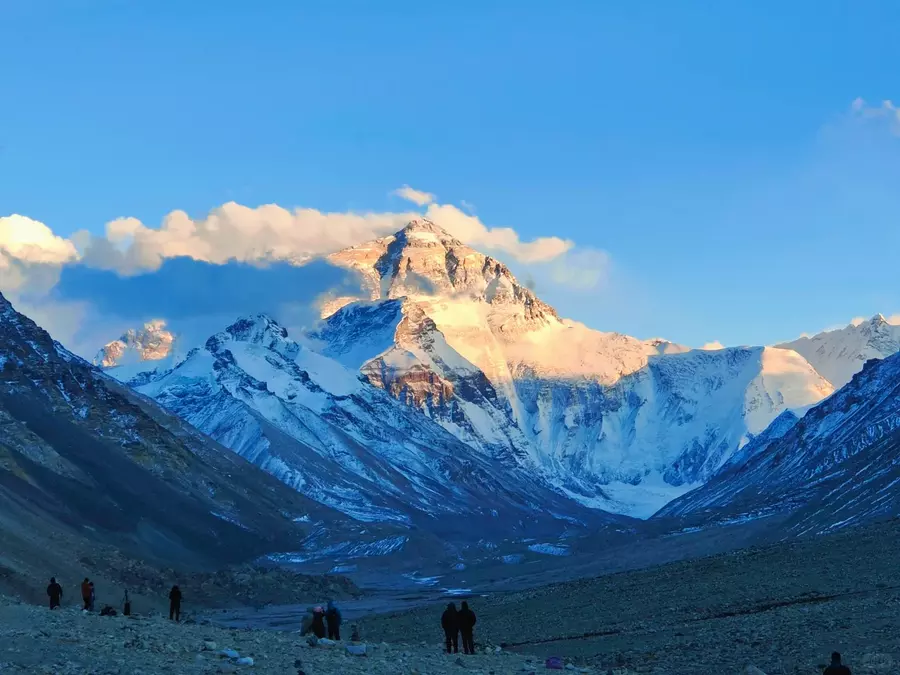
Day 4: Saga - Darchen
You will leave Saga in the early morning and head towards Darchen (4,560m), which is located at the foot of Mount Kailash. On the way, you can visit the sacred Lake Manasarovar and experience its serene and profound beauty. The route will take you through sand dunes, mountain ranges, and sandstone regions before arriving in Darchen. Darchen is a small nomadic village that serves as the starting point for the Mount Kailash pilgrimage. Mount Kailash remains a sacred place for four religions, with millions of devotees considering it the center of the world. If you wish to participate in the kora (pilgrimage circuit) around Mount Kailash, you can set aside an additional two days.
Day 5: Darchen - Zanda County
In the morning, you can visit the Sarshung Prayer Flag Square at the base of Mount Kailash to experience the deep devotion of pilgrims. Then, set off for your next destination, Zanda County (3,700m). Along the way, you’ll witness the spectacular Zanda Earth Forest, a unique landscape formed by water erosion. In the shifting light and shadows of the plateau, it appears like a mythical world. Additionally, you can visit the first Buddhist temple built in the Ngari region, Tholing Monastery, a masterpiece combining the architectural and Buddhist sculptural styles of India, Nepal and Ladakh.
Day 6: Zanda County - Shiquanhe Town
Depart from Zanda County and head to Shiquanhe Town (4,350m). The driving distance today is shorter, allowing for a leisurely exploration of the sights along the way. Following the Sutlej River which nurtured Tibetan civilization, you can explore the mysterious ruins of the Guge Kingdom, representing Tibet’s ancient history and culture. The once powerful Guge Kingdom has left only weathered remnants and vast stretches of yellow earth. Afterward, you will drive to Shiquanhe Town, where you can rest and resupply for the next leg of the long journey.
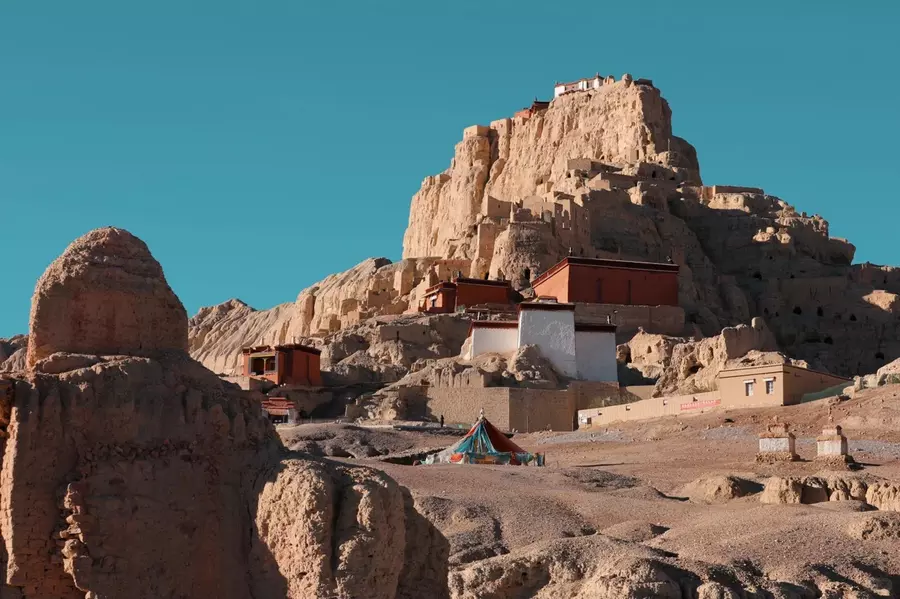
Day 7: Shiquanhe Town - Pangong Lake
In the morning, leave Shiquanhe and drive 230 kilometers northwest to reach Pangong Lake (4,250m). This unique lake is shared by China and Kashmir. The fascinating aspect of Pangong Lake is that the Chinese side is freshwater, with lush vegetation and abundant birdlife, while the Kashmir side is saltwater, where no fish thrive. In May and June, the area is covered in blooming flowers, and the skies are filled with birds, creating a truly spectacular scene.
Day 8: Pangong Lake - Shahidulla
Today, you will set out from Pangong Lake and cross the Jieshan Daban(5,290m) to reach Shahidulla (3,700m) in Xinjiang. This will be the most challenging day, as you'll traverse the toughest section of the Xinjiang-Tibet Highway. First, you'll pass through about 255 kilometers of uninhabited terrain, followed by an endless series of mountain passes. From the first snowy pass, Kudi Daban, to the longest pass on the route, Maza Daban, to the highest, Hongtu Daban, and finally to the most famous, Jieshan Daban, the up-and-down journey is thrilling and offers stunning views of towering snow-capped mountains. The Karakoram Mountains are particularly majestic. After this adventurous drive, you'll arrive at Shahidulla.
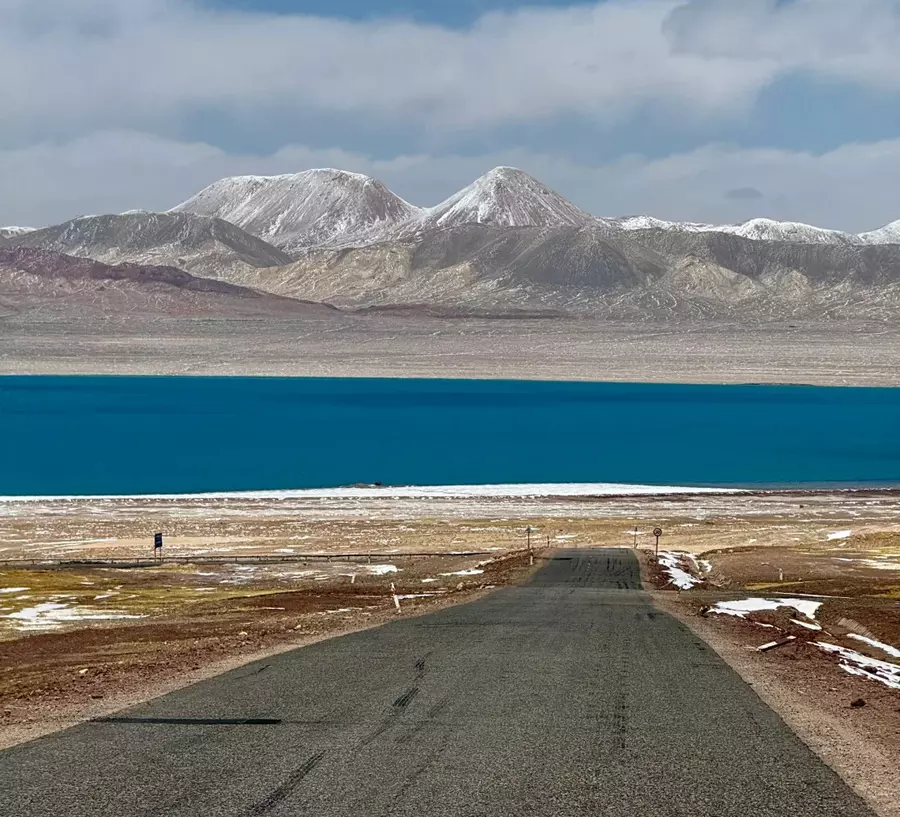
Day 9: Shahidulla - Yecheng
The road was not easy to drive on this day because the soil on the road is loose and therefore there is constant mudslides and landslides. After crossing the Lameila Daban, you'll enter the more desolate southwestern region of Xinjiang, which borders Pakistan. The famous K2 (Mount Godwin-Austen), the second-highest peak in the world, is located along this stretch of the Karakoram Range. In the late afternoon, you'll reach the endpoint of G219—Yecheng (1,765m).
Day 10: Yecheng - Kashgar
From Yecheng to Kashgar, it is a journey full of history and natural scenery. The drive covers around 200 kilometers and takes about 3-4 hours. Along the way, you'll pass countless oases, orchards, and rolling mountains. Upon arriving in Kashgar, you can explore the ancient city and experience its rich Islamic culture. You can stroll through the bustling handicraft markets and sample local delicacies. The Kashgar’s Grand Bazaar, one of the largest markets in Central Asia, is a must-see attraction.
Road Conditions
Xinjiang-Tibet Highway (G219) primarily consists of the vast Gobi desert and towering snowy mountains, with large sections uninhabited for hundreds of kilometers. You will climb over four 5,000-meter Dabans, and you also have to cross the Quanshui Lake, which will directly test your ability to resist altitude sickness. Combined with the lack of oxygen and unpredictable weather, the route can exceed the physical limits of many travelers. The 244-kilometer section from Dahongliutan to Songxi Township is a complete no-man’s land with almost no human habitation. The temperature in winter reaches -40℃, and the oxygen content is only 44% of that in inland areas. It is one of the most difficult roads in the world, and most of the areas it passes through are "no man's land". With an average altitude of more than 4,500 meters, it is the highest, most dangerous, and most hostile plateau road in the world. In addition to the high altitude, another difficulty you have to overcome is the headwind.
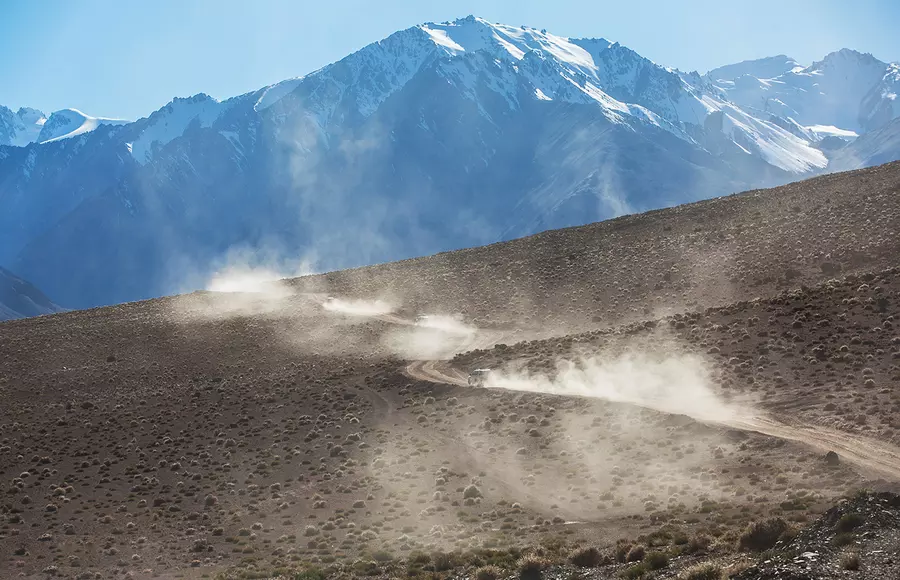
The overall road conditions are poor, especially around the border between Tibet and Xinjiang. There are numerous mountain passes, high altitudes, sharp elevation changes, and many bends. So it's generally recommended to start the journey from Lhasa rather than from Xinjiang, as the altitude increases sharply from Xinjiang, making altitude sickness more likely to happen. The road between Xinjiang and Duoma is especially rough with washboard sections, so drivers should be cautious. From Duoma to Lhasa, the road is mostly asphalt paved, though some sections may be damaged due to seasonal weather, typically not too severe. However, there are rough road sections between Darchen and Zanda (over 100 km), as well as between Baga and Paryang and parts of Saga, so be prepared with proper chassis protection.
During August and September, what you need to notice is that the roads in Lhatse County may be in poor condition. The Maza Pass in the Kunlun Mountains may experience snowfall, with thin ice forming on the roads at night. It's best to cross this area during daylight hours. The road conditions are worse in winter, so it's generally safest and most recommended to travel during the summer.
Best Time to Travel
The ideal season for self-driving on the Xinjiang-Tibet Highway is from May to September. During this period, road conditions are relatively better. July and August are particularly scenic, but travelers should be aware of potential natural disasters such as landslides and mudslides. Once the roadbed is damaged, it will be difficult to repair. Additionally, this is the peak tourist season, so traffic jams are possible, and prices tend to rise slightly. Winter and spring driving is much more challenging due to snow and road closures, particularly on Mayum La Pass (5,211m), where snow can reach 1 meter deep in winter.
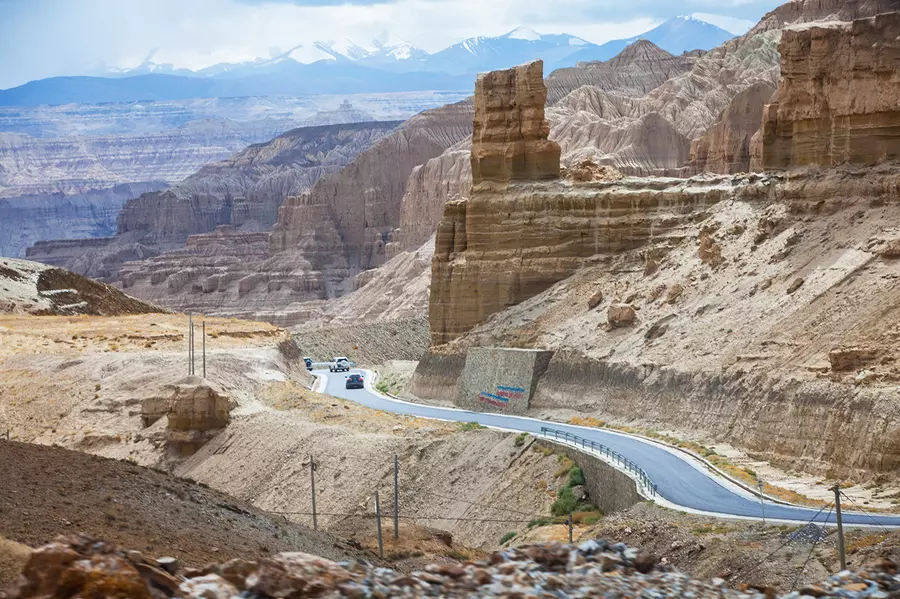
Travel Tips
- Permits: As the route passes through Tibet and along China's southwestern border, you will need a Tibet Travel Permit, Alien's Permit and Military Permit. It's best to contact local travel agencies in advance to help with the paperwork.
- Altitude: The Tibet section of the route is at high altitude. Be prepared for altitude sickness and consider bringing portable oxygen cans. Try to stay overnight in lower-altitude areas and avoid strenuous activities to conserve energy.
- Cultural Respect: Xinjiang and Tibet are home to many ethnic minorities, each with distinct customs and religious beliefs. It's essential to respect the local traditions and practices along the way.
- Essential Supplies: Bring necessary medications such as altitude sickness pills (e.g., Nuodikang Capsules, Rhodiola), anti-diarrhea medication, cold medicine, and anti-inflammatory drugs. Also, pack personal daily items like towels, toothbrushes, toothpaste, tissues, and a cup, because some accommodations may not provide them. It’s better to bring snacks like chocolate, chips, or biscuits to stave off hunger during the trip.
Conclusion
Xinjiang-Tibet Highway, or G219, offers a unique and challenging experience for travelers seeking adventure and a deeper connection with the natural and cultural landscapes of Tibet and Xinjiang. With its breathtaking views of towering mountains, expansive deserts, and sacred religious sites, this route presents both incredible beauty and formidable challenges, including high altitudes, difficult terrain, and unpredictable weather. For those well-prepared and determined, the journey along G219 promises an unforgettable exploration of China's remote and mystical regions, providing lasting memories of resilience, awe-inspiring scenery, and cultural immersion.
Related Articles
- Himalaya Tours & Trips
- Kunlun Mountains
- Where is Mount Everest Located
- Nature and Photography Tour
- Most Famous Highest Mountains of Tibet
- Nepal-Bhutan Flights: Everything You Need to Know!
- Road to Tibet
- Nagqu Map
- Friendship Highway
- How to Get to Tibet?
Email response within 0.5~24 hours.


